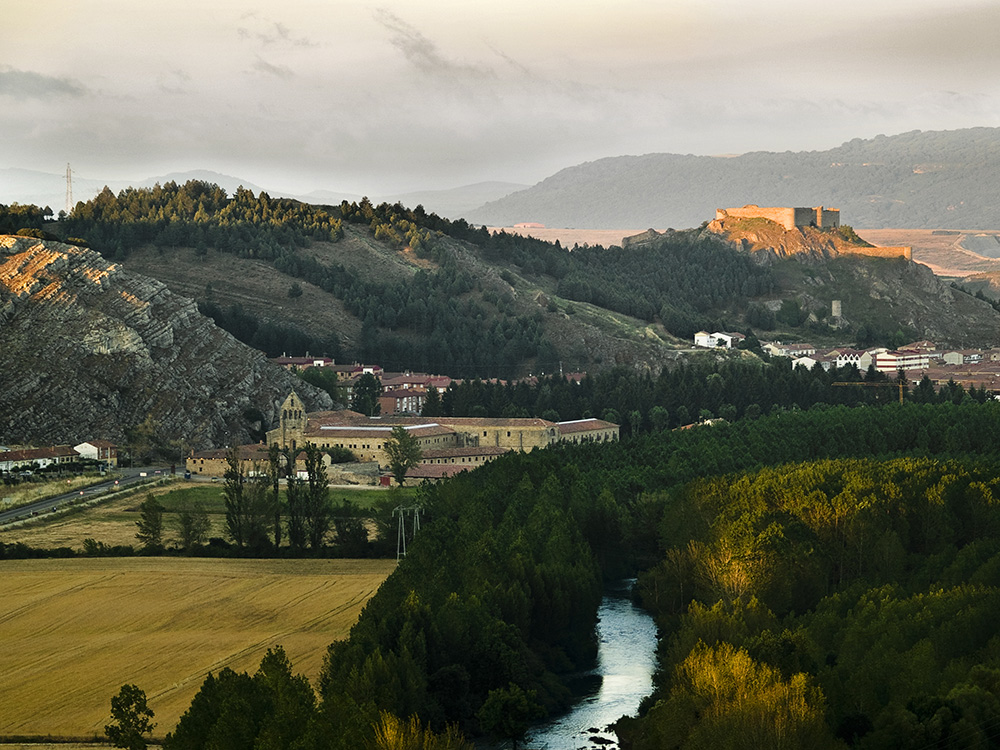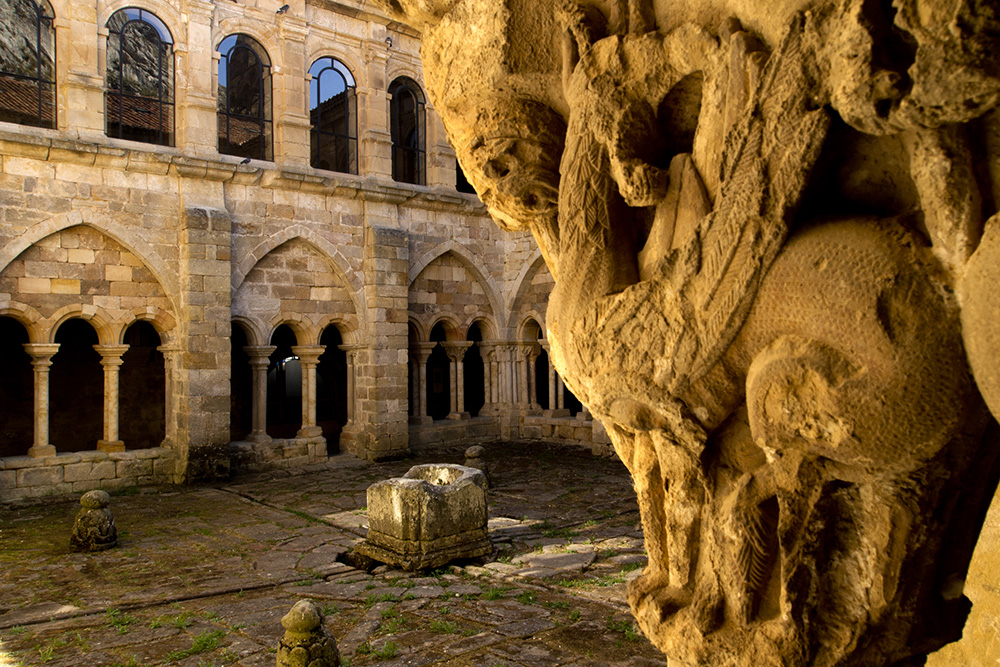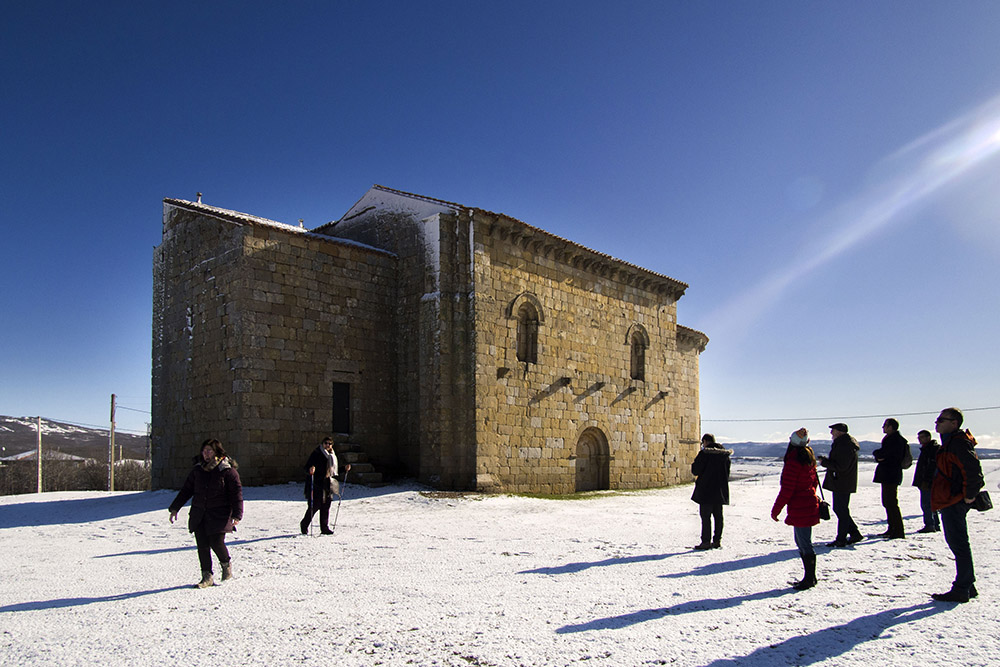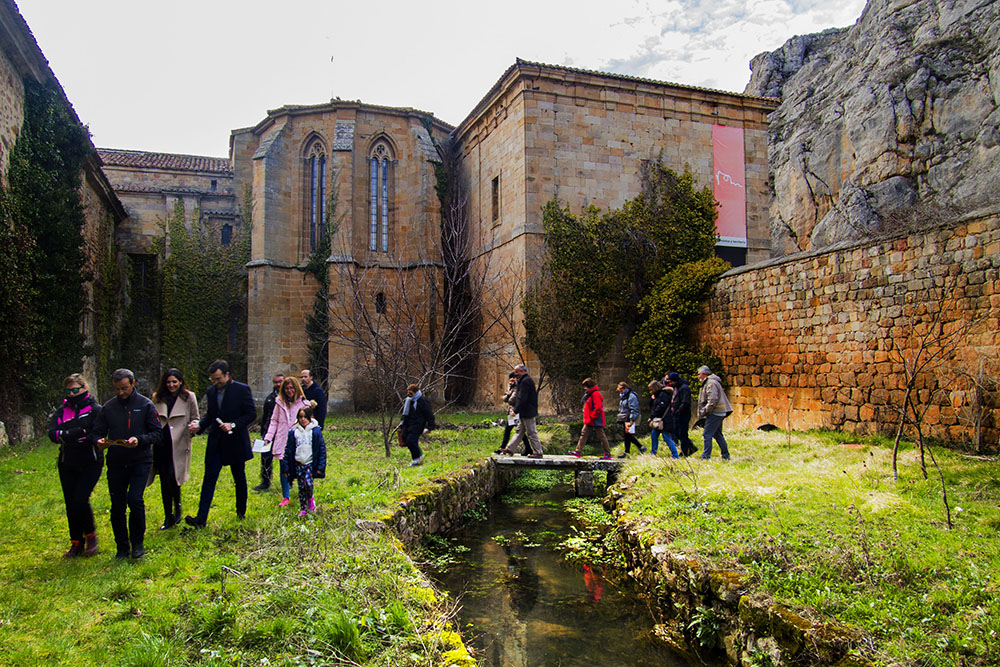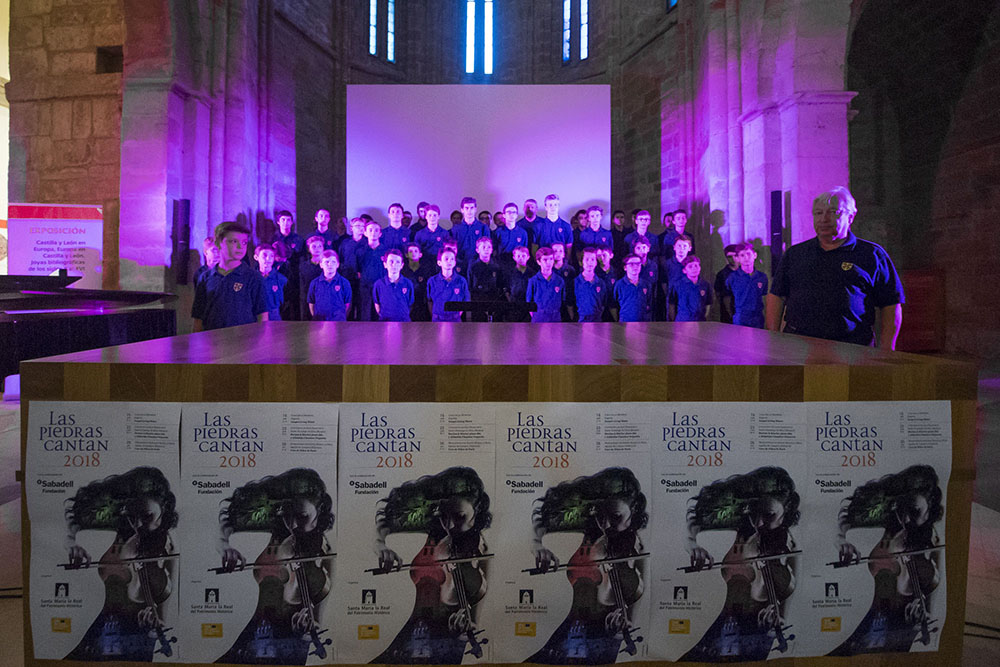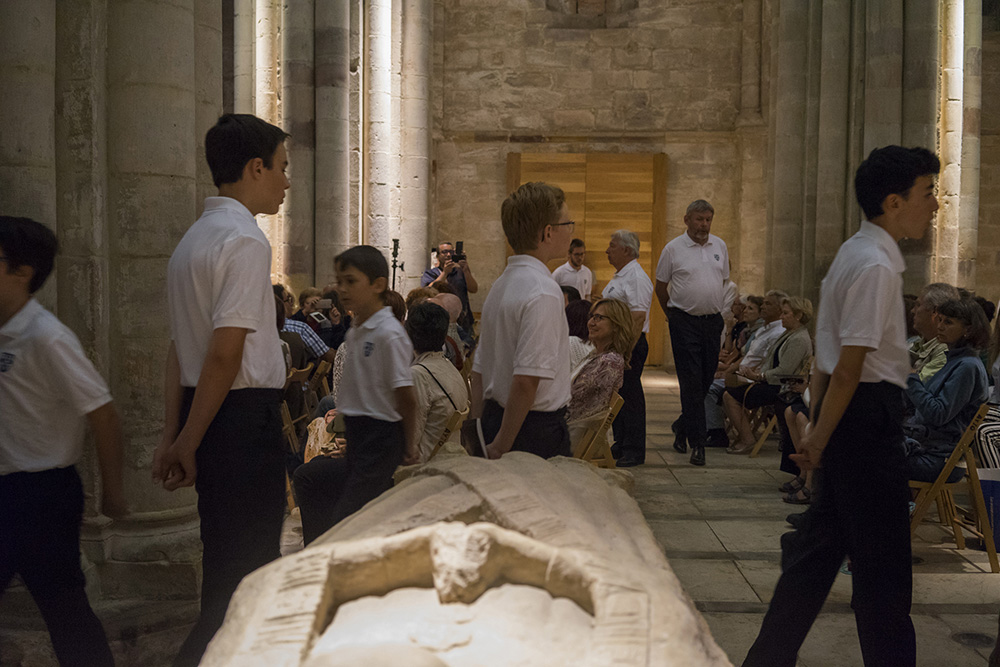The Heritage Site
The Spanish monastery of Santa María la Real is classed as a National Monument. It was formerly a Prémontré monastery founded by various eremitic communities during the 7th century. Having undergone periods of both prosperity and crisis, in 1835 it was transformed by ministerial decree into an ecclesiastical institute and later abandoned.
During the 1970s, the site was restored thanks to the actions of the Association of Friends of the Monastery d’Aguilar, which later became the Foundation Santa María la Real. A group led by the architect José Maria Pérez “Peridis” succeeded in transforming the ruin into a catalyst for social and cultural development throughout the community of Montaña Palentina (Province of Palencia).
The Cultural Project
Thanks to the work of the Foundation, the former monastery today houses a school, a museum, a hostel, a UNED office, a training centre and, since 1988, a centre for the study of Romanesque art.
For over forty years, the Foundation has sought to construct a new future through economic development, and draws on the strength of its team of over 200 professionals to bring to life this major social and cultural project. Heritage, landscape and people are the three pillars on which the project rests, and are key in revitalising the local area.
The aim of the Foundation is to bring life to the region and encourage its development and growth, so that it has as much of interest in its future as in its past. The success of the Foundation is due to engagement, involvement, innovation and knowledge, along with a professional management structure. It reinvests its profits in its growth and development, never forgetting that its people are its greatest asset.
Activities
Over time, the Foundation Santa María la Real has grown from a local project into a large organisation engaged in work in several regions.
The missions of the Foundation is structured around four areas of activity: Employment and entrepreneurship; Heritage conservation; Tourism and culture; and Social services. In each of these areas, the Foundation initiates projects aimed at generating development and wealth, with people as the driving force and central focus. The success of these projects depends on listening to those involved, understanding their problems and concerns in order to respond appropriately to their needs.
Employment and entrepreneurship: The Foundation works with and for people, creating programmes to help people into work and provide professional training (Lanzaderos de empleo), as well as running courses, producing publications and organising consultations.
Heritage conservation: Historical monuments are an integral part of the life of a region and its population. The Foundation has taken part in the restoration of over 500 historical buildings and today makes use of new technology to enable smart management and preventative conservation.
Tourism and culture: The Foundation has published over 300 books and organised over 480 cultural activities (courses, workshops, trips, seminars etc.) which have become important meeting points for those interested in heritage, culture and history.
Social services: The Foundation works closely with local populations to encourage integration, intergenerational relationships, active ageing and personal development.
Influence and reputation
The work of the Foundation has been recognised numerous times, with over 50 commendations including nine Europa Nostra heritage awards. The first was for the restoration of the monastery of Santa María la Real, the head office of the Foundation, and it has also been recognised for the research, cataloguing and heritage promotion work involved with its impressive Encyclopaedia of Romanesque Art, which can be found in libraries and bookshops across the world.
Europa Nostra has also recognised the restoration of buildings such as the Church of San Nicolás de Bari in Madrigal de las Altas Torres, the Monasterio de las Descalzas in Valladolid, the cenotaph of San Vicente in Ávila and the rupestrian church of Santos Justo y Pastor.

